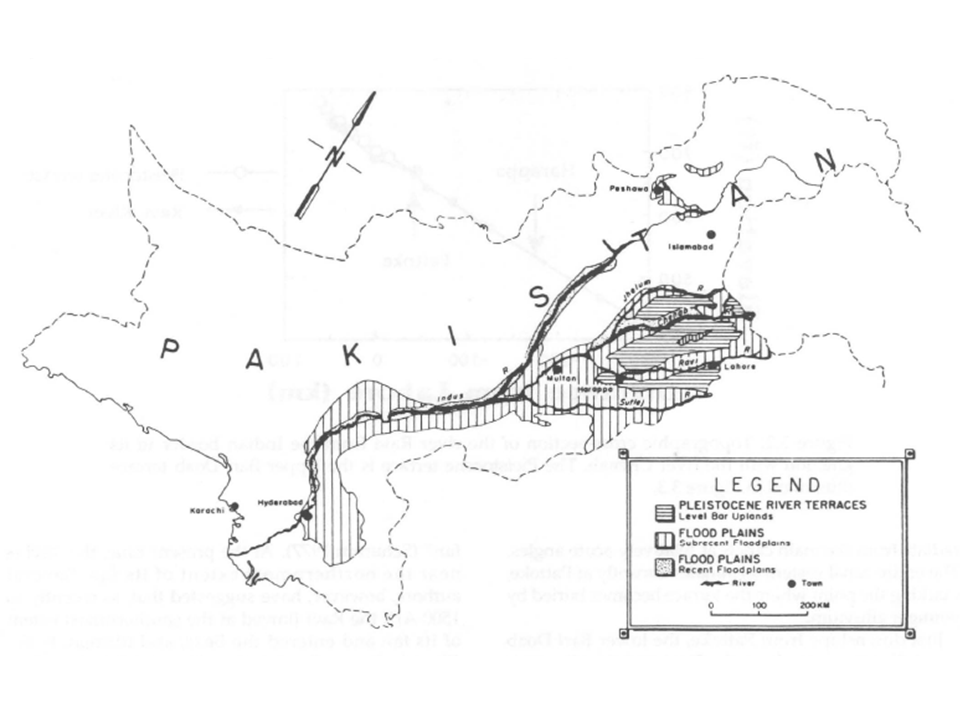A review and explanation of the regional climate, geology, and environment which historically influenced the life and culture of the Harappan peoples.
"A review and synthesis of pertinent pedological, geological, and paleoenvironmental studies in the vicinity of Harappa (District Sahiwal, Punjab, Pakistan) suggest that a wealth of research opportunities exists for earth scientists interested in contributing to an understanding of the origins and later decline of the Indus civilization.
Harappa lies near the apex of Holocene indicate several periods of river Ravi on an alluvial deposit of late Pleistocene age. Soil patterns around Harappa indicate several periods of river meandering and channel infilling.
Stable isotopes in pedogenic carbonates of a soil buried by early occupation offer potential insights into pre-Harappan environmental conditions. Although carbon isotope ratios are difficult to interpret unambiguously, they suggest either a very arid, sparsely vegetated site (matching presumed latest Pleistocene conditions) or a nearly pure C4
flora, indicative of a tropical grassland (presumed early Holocene conditions). Oxygen isotope ratios in the carbonate are also difficult to interpret due to a lack of knowledge of the isotopic composition of present precipitation. Depending on the temperature at which the carbonates formed, the oxygen isotope ratios in the carbonate could indicate that pre-Harappan conditions were either similar to the present or that a stronger monsoon may have existed."
Chapter 3 of Harappa Excavation Reports 1986-1990

